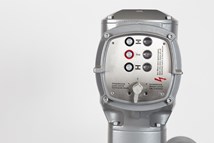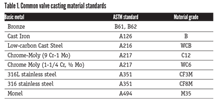NAM Monday Economic Report – November 17, 2014
Manufacturers produced $2.085 trillion in value-added in the second quarter, according to new data from the Bureau of Economic Analysis.
Business leaders and consumers were more upbeat in their assessments of the economy in reports released last week. The National Federation of Independent Business (NFIB) reported that small business owner optimism rose in October, with sales and hiring expectations increasing. The outlook among small businesses has generally improved over the course of this year. With that said, earnings remained a challenge, and the net percentage saying that the next three months were a “good time to expand” declined slightly. In addition, government regulations and taxes topped the list of the “single most important problems.” The economic and political climate was also a concern for many businesses.
At the same time, the University of Michigan and Thomson Reuters found that consumer sentiment was at its highest level since July 2007. That finding mirrors similar data from the Conference Board, which also has reached a pre-recessionary high of late. This reflects improvement in Americans’ perception of the U.S. economy, and it is likely that lower gasoline prices and rising equity values have lifted consumers’ spirits. In addition, there have been fewer geopolitical events in the news recently that might lessen overall optimism.
The average price of regular gasoline was $2.91 last week, according to the Energy Information Administration, down from $3.64 in late June. Accordingly, consumers have more income in their wallets to spend, which should act like a stimulus to the economy, particularly building up to the holidays. Indeed, retail sales rose slightly above consensus in October, rebounding from softness in September. Excluding gasoline station sales (which declined in nominal terms due to lower prices), retail spending would have risen by 0.6 percent. On a year-over-year basis, retail sales have risen 4.1 percent, which suggests decent consumer spending growth over the past 12 months. Wholesale trade orders were also up in October.
Meanwhile, increased demand and output have led to better employment numbers for manufacturers. According to the most recent Job Openings and Labor Turnover Survey (JOLTS) report, the sector hired 280,000 workers in September, a sharp uptick after the soft 236,000 hires observed in August. The September figure reflected the fastest hiring pace since November 2010. Nonetheless, the number of job postings declined from 296,000 in August to 285,000 in September. While this was not a positive development, the longer-term trend for job openings remains a positive one.
This week, we will get a number of reports on the health of the manufacturing sector, including industrial production and surveys from the New York, Philadelphia and Kansas City Federal Reserve banks. In addition, we will get Flash PMI data from Markit for China, Japan, the Eurozone and the United States. Beyond these figures, other highlights include consumer and producer prices, housing starts and state employment reports.
Chad Moutray is the chief economist, National Association of Manufacturers.
RELATED CONTENT
-
Editor's Product Picks
Neles introduces valve-sizing and selection software for all intelligent automated process valves.
-
Additive Manufacturing of Pressure Equipment
How manufacturers can design and produce PED-compliant equipment using additive manufacturing.
-
MSS Publishes Revised and New Industry Standards
The Manufacturers Standardization Society (MSS) of the Valve and Fittings Industry is excited to announce publication of the new Standard Practice SP-158-2021, Supplemental High-Pressure Gas Test Procedures for Valves.








 Unloading large gate valve.jpg;maxWidth=214)

